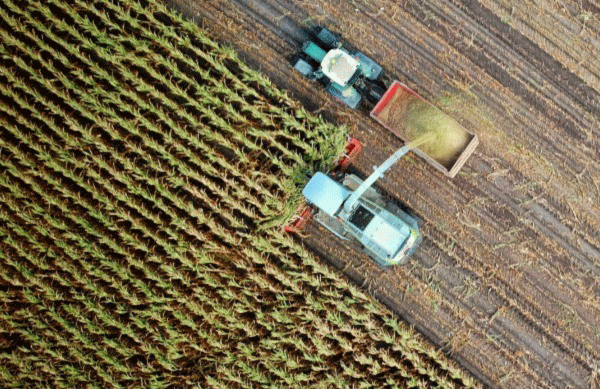Climate change will slow U.S. crop yield growth by 2030
Corn, soybean and wheat harvests are vulnerable

Extreme heat, changing rainfall and other climate change impacts will make it harder to grow staple crops in the U.S. as soon as 2030. Adaptation efforts must begin now to protect food supplies and farmer livelihoods.
A new report from EDF — How Climate Change Will Impact U.S. Corn, Soybean and Wheat Yields: A county-level analysis of climate burdens and adaptation needs in the Midwest — uses an ensemble of 20 computer models to analyze how climate change will alter yields of staple crops in Iowa, Minnesota and Kansas by 2030 and 2050.
Explore how climate change will impact harvests in this interactive map
By 2030:
- Nearly all counties in Iowa will see corn yields that are more than 5% lower than they would have been without climate change. More than half will see declines of 10% or greater.
- More than half of Minnesota counties will see soybean yields drop by more than 5% from what they would have been without climate change. Seventeen-percent will see declines of more than 10%.
- Eight-percent of Kansas counties will see winter wheat yields drop by more than 5% from what they would otherwise be without climate change.
Warmer temperatures are a double-edged sword for crop productivity. In some counties, climate change will lead to more growing-degree days when conditions are favorable for crop growth. In all counties, climate change will increase killing-degree days when temperatures are too hot for crops to grow.
Those detrimental impacts far outweigh any boosts, and the resulting drag on yields could have devastating impacts for global food security and agricultural economies. The report used an optimistic climate scenario where pollution peaks by mid-century and then declines. The world isn’t on track to meet that goal, and consequently, reductions in yields could be much worse.
Solutions must be local
Agriculture has always been highly variable, with different soil types and water availability even within the same farm field. Climate impacts will be similar, with high variability between counties.
The report models anticipated climate impacts down to 4,000 acres — smaller than county boundaries — to make the information as relevant and actionable as possible to farmers, policymakers, food companies and other agricultural decision-makers.
Adaptation must begin now
Climate adaptation can ensure U.S. farms stay productive in the face of the climate change, continuing to support global food needs and rural economies.
Adaptation can be incremental or transformational. An incremental approach would include growing a more resilient variety of an existing crop on a farm. A transformational approach would include growing more diverse crop rotations across an entire region. We will need a mix of both.
Change at this scale will take time. Efforts to climate proof agriculture must begin as soon as possible.
Our experts
-

Eileen McLellan
Lead Senior Scientist
-

Kelly Suttles
Senior Research Analyst, Climate-Smart Agriculture
-

Britt Groosman
Senior Vice President, Agriculture, Water and Food
MEDIA CONTACT
Hilary Kirwan
(202) 572-3277 (office)










